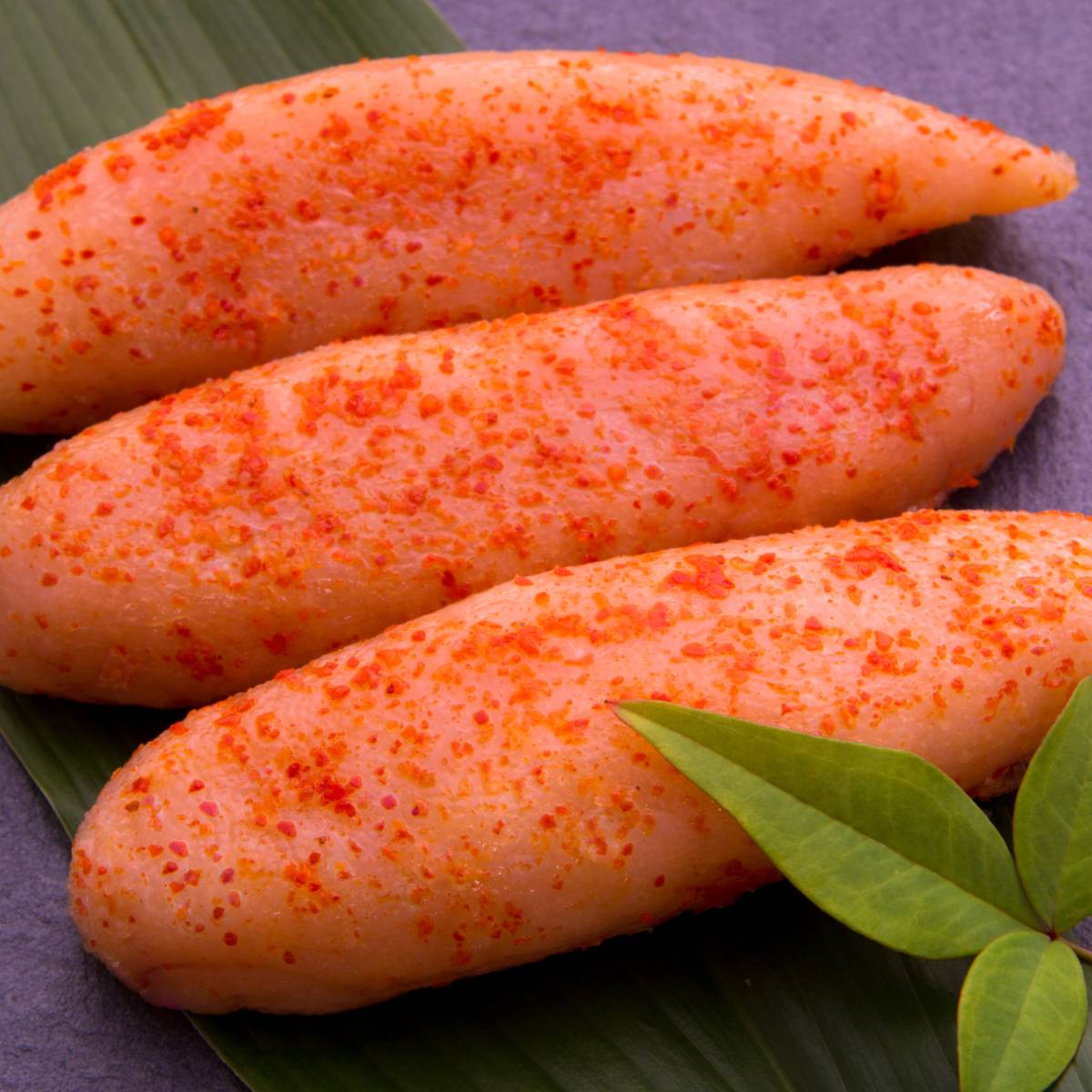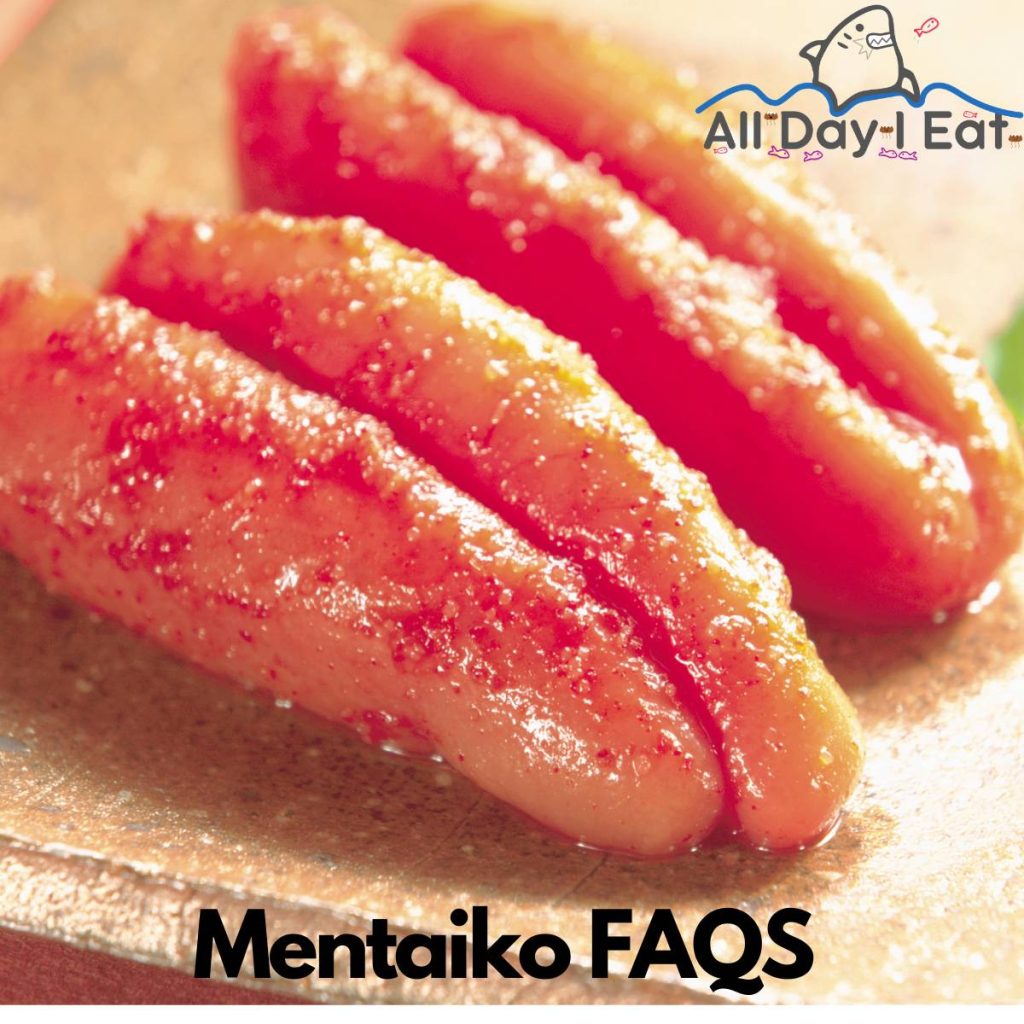Are you curious about the delicious and unique flavor of mentaiko?
Or wondering how to incorporate it into your cooking?
Get ready to explore the world of mentaiko with our frequently asked questions.
From its taste to its health benefits, preparation methods to where to buy it, we’ve got you covered.
Join us on a journey to discover all there is to know about this beloved Japanese delicacy.

What is mentaiko?
Mentaiko, also known as spicy cod roe or karashi mentaiko, is a popular Japanese food item made from the roe (eggs) of Alaska pollock that has been marinated in a mixture of chili peppers, salt, and sometimes vinegar or other seasonings.
Mentaiko is a staple ingredient in many Japanese households and can also be found in specialty food stores and restaurants around the world.
What does mentaiko taste like?
Mentaiko has a unique flavor that is savory, slightly salty, and slightly spicy.
It has a soft and creamy texture that is similar to mayonnaise.
The taste can vary depending on the type of mentaiko and how it is prepared, but overall it has a distinct umami flavor that is enjoyed by many.
What are the health benefits of mentaiko?
Mentaiko is high in protein and omega-3 fatty acids, which are beneficial for heart health and brain function.
It also contains essential vitamins and minerals such as vitamin D, calcium, and iron.
How do I prepare mentaiko?
Here’s a simple guide on how to prepare mentaiko:
Begin by removing the mentaiko from its packaging and placing it on a cutting board.
Use a sharp knife to cut the mentaiko open lengthwise. Be careful not to cut too deep as you don’t want to damage the roe.
Using a spoon, gently remove the roe from the sac and place it in a separate bowl.
Be sure to remove any bits of membrane or other debris that may have gotten mixed in.
Depending on how you plan to use the mentaiko, you can leave it as-is or add additional seasonings or flavorings.

Where can I use mentaiko?
Mentaiko is commonly used as a topping or filling for sushi, onigiri, and other Japanese dishes.
It can also be used as a condiment or flavoring for pasta dishes, as a spread for toast, or as a dip.
You can try my recipes for mentaiko below:
Is mentaiko suitable for vegans and vegetarians?
No, mentaiko is not suitable for vegans or vegetarians as it is made from fish roe.
Where can I buy mentaiko?
Mentaiko can be found in Japanese grocery stores and many Asian supermarkets.
It may also be available in some seafood markets or can also be purchased online through various retailers that specialize in Japanese food and ingredients.
It’s important to note that the availability of mentaiko may vary depending on your location.
You can buy it in amazon, click the link here.
How should I store mentaiko?
Mentaiko should be stored in a refrigerator, either in its original packaging or in an airtight container.
It is important to keep it refrigerated at all times, as it is a perishable food item that can spoil quickly if left at room temperature for too long.
When storing mentaiko, make sure to keep it away from any other strong-smelling foods to avoid cross-contamination.
Additionally, it is recommended to consume mentaiko within a week of opening the package to ensure optimal freshness and quality.

What are the different types of mentaiko?
There are different types of mentaiko, such as tarako mentaiko, which is made from the roe of Alaska pollock, and mentaiko made from cod roe.
There are also variations in the level of spiciness, with some brands offering mild or extra spicy options.
Is mentaiko high in protein?
Yes, mentaiko (spicy cod roe) is a good source of protein. One serving (100g) of mentaiko contains around 20g of protein.
What recipes can you make with mentaiko?
Mentaiko is a popular ingredient in Japanese cuisine that can be used in many different recipes. Some popular dishes include mentaiko pasta, mentaiko sauce, mentaiko mayo, mentaiko onigiri, mentaiko sushi, mentaiko udon, mentaiko fried rice, and mentaiko soup. It can also be added to potato salad or omelettes for a unique and flavorful twist.
Conclusion
Whether you’re a seasoned chef or a curious foodie, mentaiko is an ingredient that should not be overlooked.
With its bold flavor, vibrant color, and impressive nutritional value, it’s no wonder why it has become a popular ingredient in many cuisines around the world.
So the next time you’re looking to add some extra flair to your dishes, consider giving mentaiko a try!
Want to learn more Japanese recipes? Click here to avail.










Konnichiwa! (Hello!) I'm Pat Tokuyama, a Japanese tofu cookbook author, who travels for music, food, and adventure. If you like Japanese tea, checkout some of the newestorganic japanese tea, matcha bowls and noren and more!
** Curious about the Plant Based Japanese Cooking Club? ** Learn more here!